Bantams. A guide to everything you need to know about keeping smaller chickens.
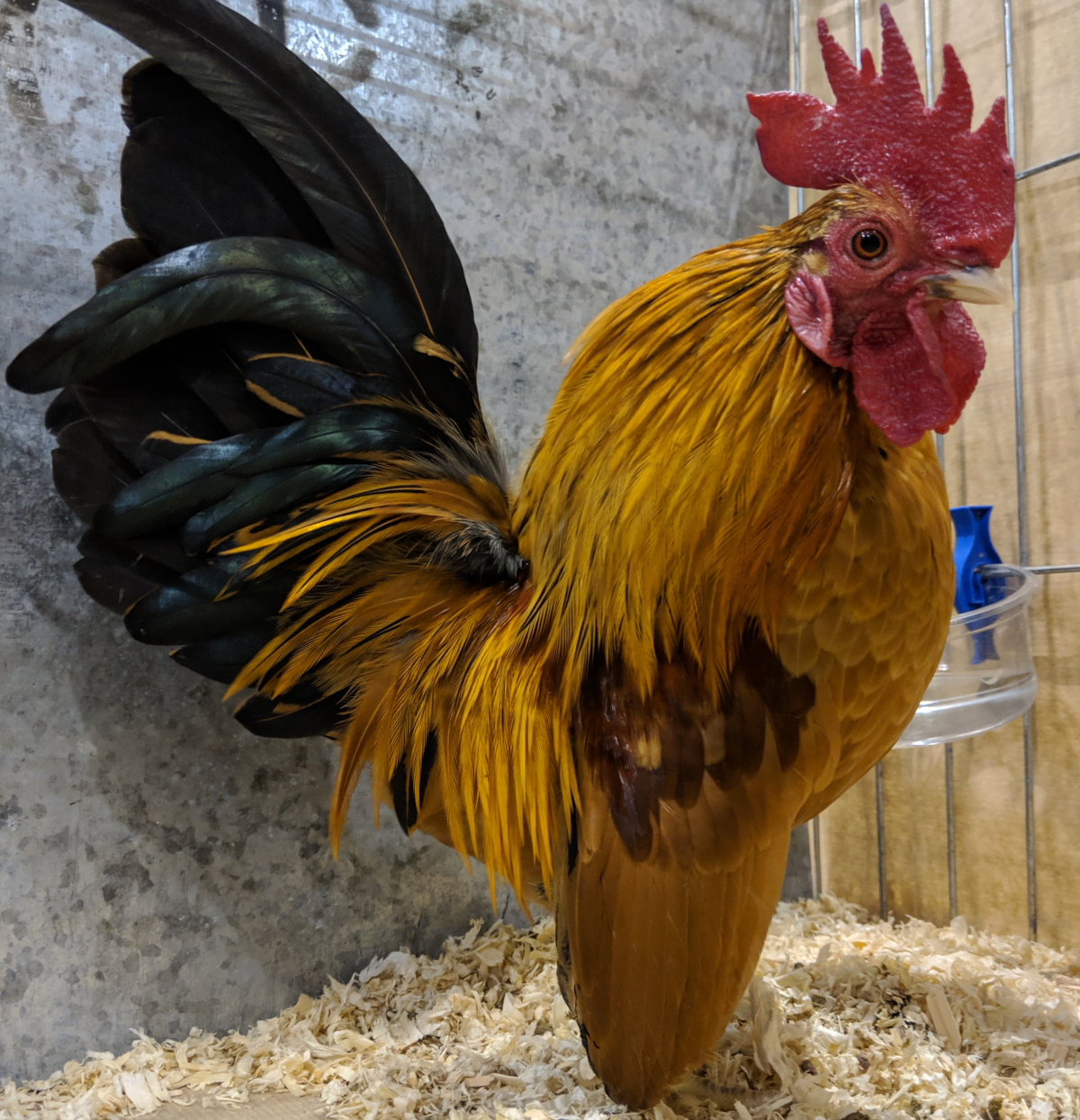
A bantam chicken is a miniature chicken that is one-fifth to one-fourth the size of a standard chicken. They are often kept as pets or for their eggs, which are typically smaller than those of standard chickens.
Table of Contents
Bantam chickens come in a variety of breeds, each with its own unique appearance and personality.
I adore my bantams. I have kept 22 different types over the years and keep them around just for fun.
What is a bantam chicken?
Bantam chickens are small, compact versions of standard chicken breeds. They are known for their charm, unique appearance, and friendly demeanour. These pint-sized chickens make wonderful additions to any backyard flock and are increasingly popular among poultry enthusiasts.
There are two types of bantam, those that are a smaller version of large fowl chickens and the true bantams. The true bantams have no large fowl version whereas with the standard bantam there is a big or large fowl type.
Bantam chickens are suitable for the smaller garden or backyard where space is short. They still require a coop and run and all the same equipment as their large fowl counterparts but it can be smaller.
Below: Bantam chickens often have big personalities.

The size of bantam chickens:
Bantam chickens are miniature chickens that are typically one-half to two-thirds the size of regular chickens. The smallest bantam chickens, such as the Serama, can weigh as little as 1 pound, while the largest bantam chickens, such as the Brahma, can weigh up to 3 pounds.
Here is a table of the average weight of some popular bantam chicken breeds:
| Breed | Weight |
|---|---|
| American Serama | 1 pound |
| Japanese Bantam | 1.5 pounds |
| Silkie | 2 pounds |
| Dutch Bantam | 2.5 pounds |
| Brahma Bantam | 3 pounds |
As you can see, there is a wide range of sizes among bantam chickens. Some bantam breeds are even smaller than others, such as the Old English Game Bantam, which only weighs about 20 ounces.
The size of a bantam chicken is determined by its breed. Some breeds, such as the Serama, are naturally small, while others, such as the Brahma, have been bred to be larger. The size of a bantam chicken also depends on its diet and care. Well-fed and cared-for bantam chickens will be larger than those that are not.
Below: Pekin bantams are a popular choice among chicken keepers.
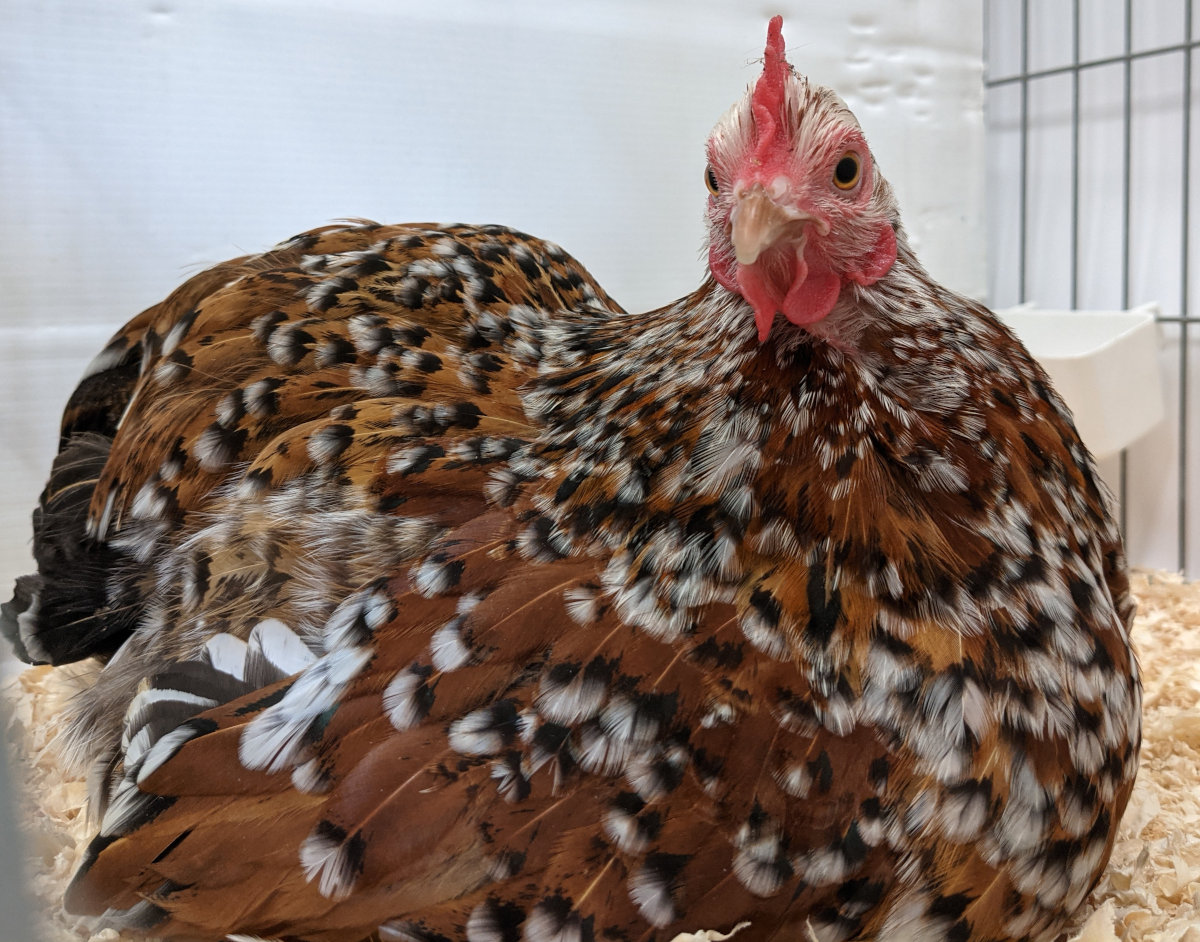
If you are considering getting bantam chickens, it is important to choose a breed that is the right size for your needs. If you have a small backyard, you may want to choose a smaller breed, such as the Japanese Bantam. If you have more space, you may want to choose a larger breed, such as the Brahma Bantam.
The eggs and laying ability of bantam chickens:
Bantam eggs are smaller than regular chicken eggs, but they are just as nutritious and delicious. They typically weigh about 1/2 to 2/3 the size of a standard chicken egg, and they have a rich, golden yolk. The shell colour can vary depending on the breed of bantam chicken, but it is most commonly white or light brown.
Below: A selection of eggs from some of my bantam hens.
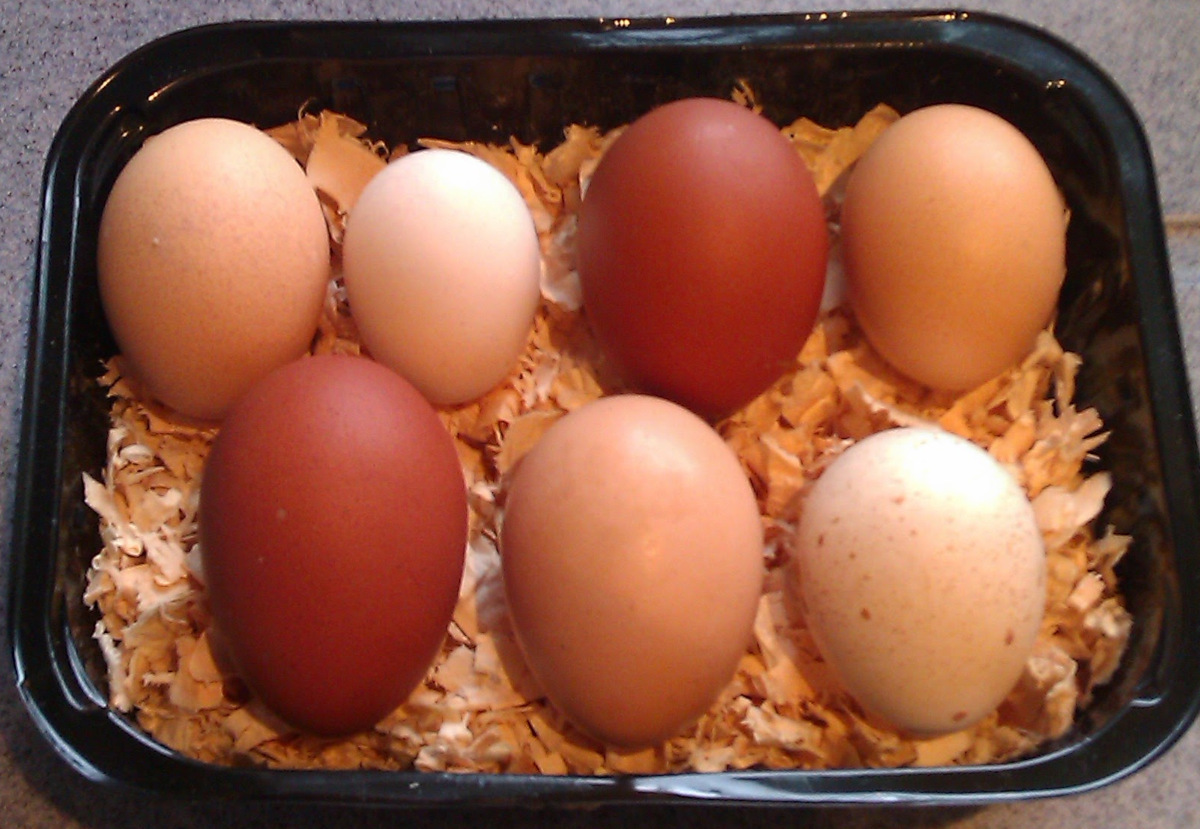
Bantam eggs are a good source of protein, vitamins, and minerals. They are also a good source of omega-3 fatty acids, which are beneficial for heart health.
If you are looking for a delicious and nutritious egg, bantam eggs are a great option. They are perfect for scrambling, frying, baking, or poaching.
Here are some additional information about bantam eggs:
- Taste: Bantam eggs taste just like regular chicken eggs, but they have a richer, more flavourful yolk.
- Culinary uses: Bantam eggs can be used in any recipe that calls for regular chicken eggs. They are also a good choice for hard-boiling, as they are smaller and cook more quickly and evenly.
- Storage: Bantam eggs can be stored in the refrigerator or cool place for 7 to 21 days.
- Nutritional value: Bantam eggs are a good source of protein, vitamins, and minerals. They are also a good source of omega-3 fatty acids.
Feeding bantam chickens:
As bantams eat less feed they will be cheaper to keep. I have found a 50% saving over large fowl.
When it comes to feeding bantam chickens, there are a few things that are different from feeding regular-sized chickens.
- Amount of food: Bantam chickens eat less food than regular-sized chickens. You will need to adjust the amount of food you give them accordingly. A good rule of thumb is to feed them 1/4 to 1/2 cup of feed per day.
- Size of food: Bantam chickens have smaller beaks than regular-sized chickens, so they need food that is small enough for them to eat. You may need to buy a special type of feed for bantams, or you can crush regular feed so that it is smaller.
- Nutritional needs: Bantam chickens have the same nutritional needs as regular-sized chickens, but they need more of some nutrients, such as calcium. You may need to add a calcium supplement to their diet.
Here is a list of some of the foods that are good for bantam chickens:
- Layer pellets: Layer pellets are a good source of all the nutrients that bantam chickens need.
- Whole scratch grains: Whole grains, such as oats, wheat, and corn, are a good source of energy for bantam chickens.
- Fresh fruits and vegetables: Fresh fruits and vegetables are a good source of vitamins and minerals for bantam chickens.
- Grit and shell: Grit is important for bantam chickens' digestion. You can give them grit in the form of small pebbles or oyster shells.
You should also provide bantam chickens with fresh, clean water at all times.
Bantam chickens are generally easy to care for and make great additions to any backyard flock. They are relatively low-maintenance and require a small amount of space. Bantam chickens are also known for being friendly and docile, making them a good choice for families with children.
Some popular bantam breeds include:
- Japanese bantams
- Silkie bantams
- Sebright bantams
- Pekin bantams
- D'Uccle bantams
Bantams make better flyers than full size chickens and will have no trouble getting to the higher perches.
Below: This is a light Sussex bantam, a small version of the large fowl Sussex.
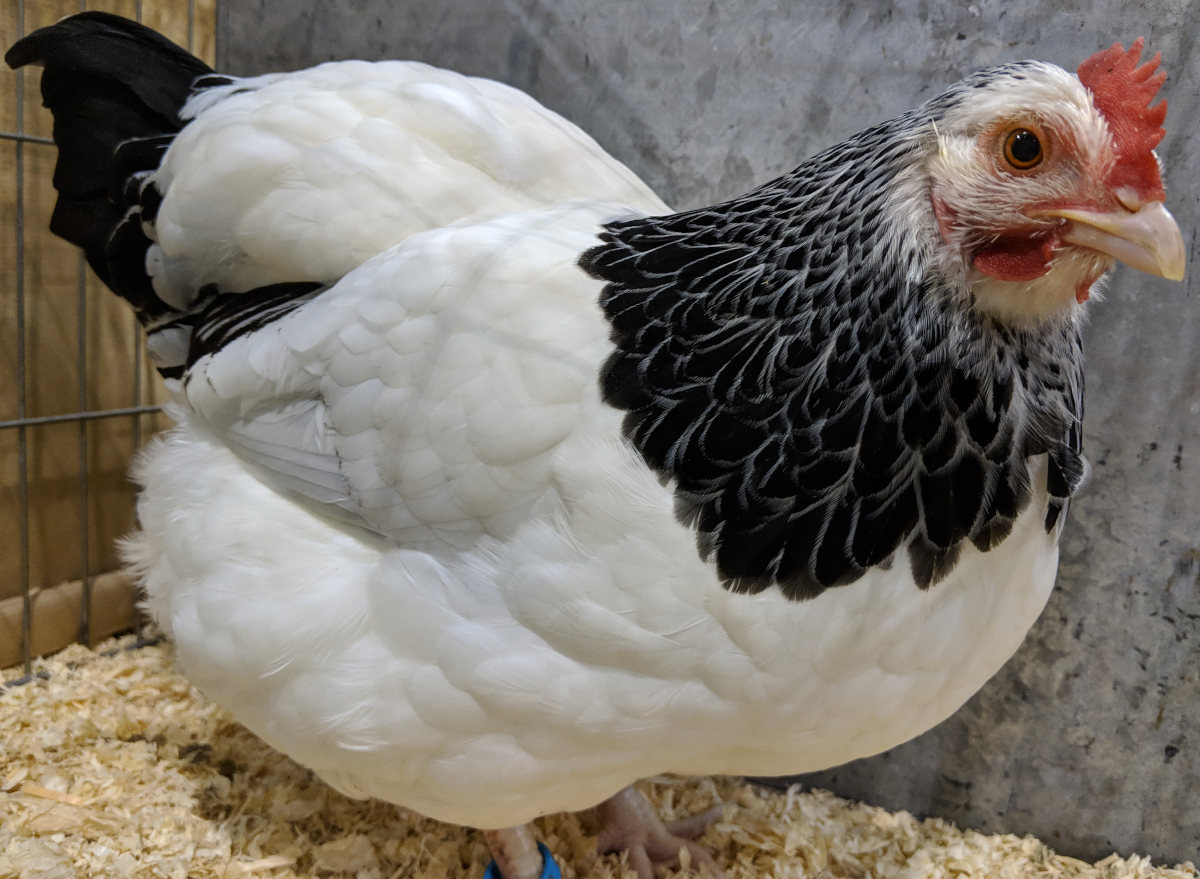
Bantams tend to be late to mature and rarely come into lay in less than 35 weeks. Silkies are particularly bad in this respect and sometimes don't start laying until they are a year old.
Bantams and large fowl chickens can be kept together with few if any problems. I have hatch both in the same incubator and even though bantam chicks are half the size they seem to get along just fine with large fowl chicks.
How many types of bantam are there?
The ABA or American bantam association lists more than 400 types of bantam chicken. For a full list of chickens breeds see this page.
Below: Here is a flock of my gold laced bantam Barnevelders.
Bantams are as a rule more ornamental and more often shown but they can be productive egg layers and are as hardy as bigger chickens.
Some breeds of bantams lay almost as many eggs as their large fowl cousins although the eggs are smaller. 3 bantam eggs is roughly equivalent to two normal eggs.
My bantams free range with my big chickens and there is rarely any trouble.
Feeding and Nutrition:
A balanced and nutritious diet is essential for the health and productivity of your bantam chickens.
High-quality commercial poultry feed specifically formulated for bantams is readily available. Look for feed labelled as "bantam" or "small breed" to ensure it meets their nutritional needs. These feeds contain the right balance of protein, vitamins, and minerals required for optimal health.
Below: Ancona bantam scratching for food.
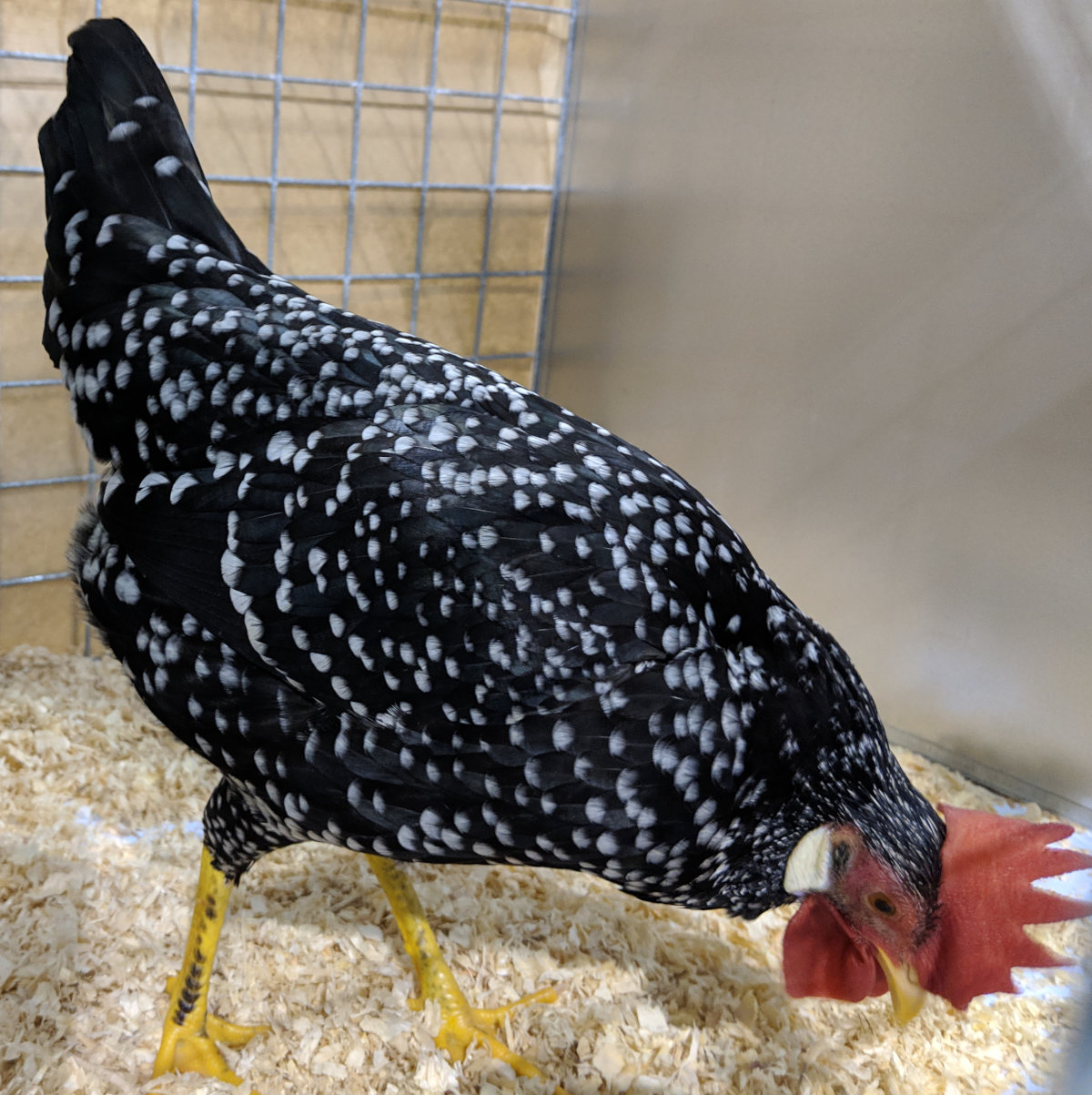
In addition, you can supplement your bantams' diet with treats and kitchen scraps. Some popular choices include fruits, vegetables, mealworms, and cooked eggs.
Ensure your bantams have access to fresh, clean water at all times. Provide waterers that are suitable for their small size, and check them regularly to ensure they are functioning properly. In colder climates, you may need to use heated waterers to prevent freezing during winter months.
Remember to offer treats in moderation and avoid anything harmful to their health, such as chocolate or avocado.
Bantam chickens have some specific traits:
If you are considering getting a bantam chicken, there are a few things you should keep in mind. First, you will need to make sure that you have enough space for them.
Bantam chickens need at least 3 square feet of space per chicken. You will also need to provide them with a coop that is secure and well-ventilated.
- Bantams are known for being more broody than large fowl chickens.
- They are easier to tame and often more friendly.
- Bantam chickens tend to fly better and more often.
- Bantams can be kept in smaller spaces.
- Bantams are good with kids and make excellent pets.
- As they are smaller they make a little less noise and mess.
Do bantams need special care?
For the most part you can treat your bantams in exactly the same way as your would your large chickens.
Some bantams do require special care, those with feathery feet and legs need to be kept on dry ground and frizzled feathered bantams need to be kept warm.
Bantam chickens are omnivores and eat a variety of foods, including chicken feed, fruits, vegetables, and insects. You will need to provide them with a balanced diet to ensure that they stay healthy.
Bantams, like all chickens, engage in dust bathing to keep their feathers clean and free of parasites. Provide a dust bathing area in their coop or run by mixing sand, soil, and wood ash. This allows your bantams to engage in this natural behaviour, promoting healthier feathers and skin.
Bantam chickens are generally healthy and do not require a lot of medical care. However, it is important to keep an eye on them for signs of illness or injury. If you notice anything unusual, be sure to take them to the vet.
The Japanese, Serama, Frizzle and Dutch bantams are not generally held to be cold tolerant birds.
Bantams are more likely to be taken by hawks and birds of prey so need a covered run.
Feather legged types can suffer in the cold and wet of winter and need to be kept dry. Pekin bantams are particularly bad in the wet and soak up water like a sponge.
Below: Silkies and Silkie feathered bantams need to be kept dry as their feathers have no waterproofing.

They are smaller and will get cold more easily and with bantams you will likely need to keep them in the brooder for a few extra days.
Bantam coop design and construction:
Your bantam chicken coop should be secure, predator-proof, and well-ventilated.
- Use sturdy materials to construct the coop, such as pressure-treated wood or galvanised steel.
- Ensure proper insulation to protect your bantams from extreme temperatures.
- Install windows and vents to promote air circulation and prevent humidity buildup.
- Include nesting boxes for your hens to lay eggs comfortably.
- Provide perches at different heights to accommodate your bantams' roosting preferences.
- Although bantams are smaller than standard chickens, they still require adequate space to move around and express their natural behaviours. As a general guideline, allow at least 4 square feet of indoor space per bantam chicken and 8-10 square feet of outdoor space per bird.
With proper care, bantam chickens can make wonderful pets and companions. They are sure to bring you years of enjoyment.
